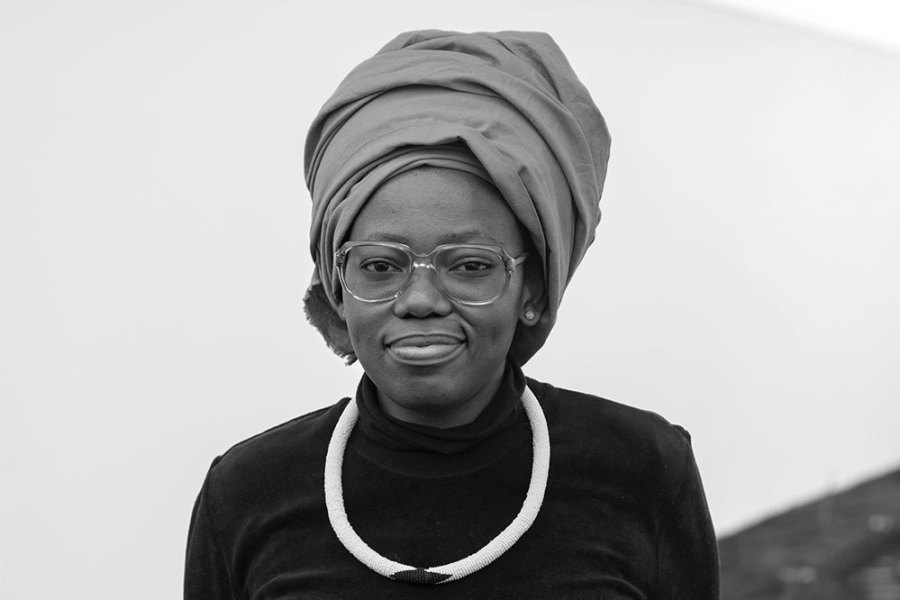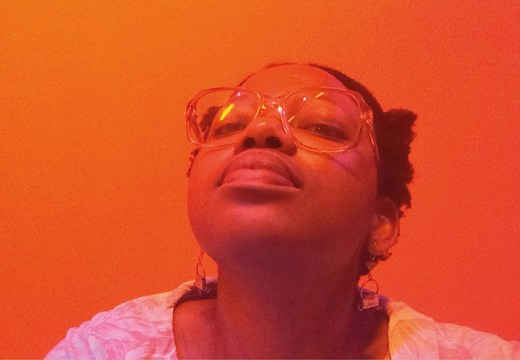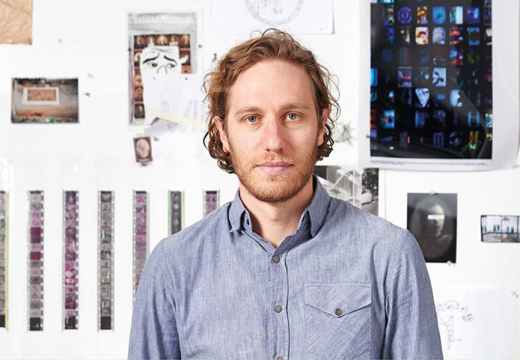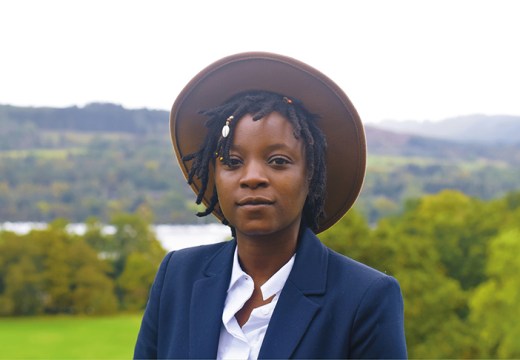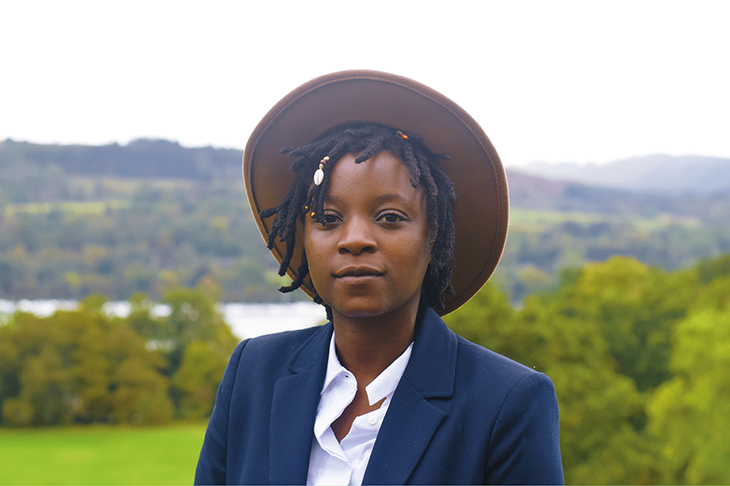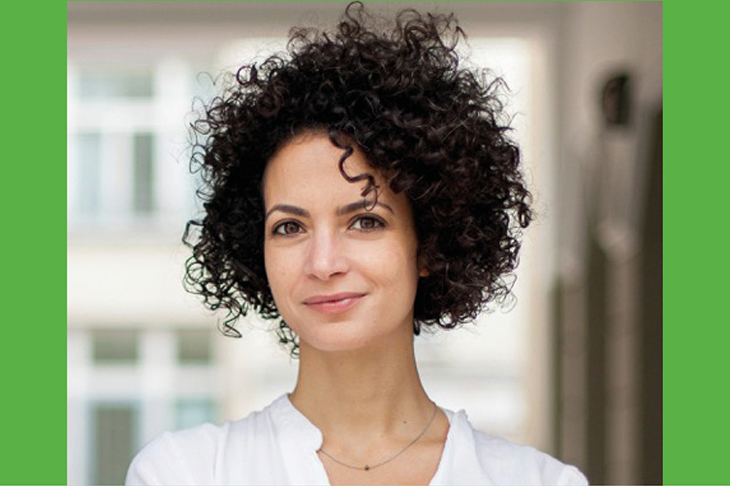Johannesburg
Continuing our series of profiles of individuals selected for the Apollo 40 Under 40 Africa
Installation art, that occasionally perplexing accumulation of things, whether sculpted or found or otherwise, doesn’t immediately invite comparison with the array of marks an artist makes on a canvas or a piece of paper – but perhaps it could. ‘A shimmering thing at the edge of analysis’: so the art historian James Elkins, in an essay of 1995, described one possible function of the mark. ‘One instant it will seem to be solid and homogenous, and then it will resolve into parts.’ A similar description might be applied to the Delphic installations of Dineo Seshee Bopape, which combine formal elements – drawing, sculpture, video – with commonplace materials like fabric, oil, feathers, herbs, bricks, mirrors, linoleum, houseplants, gold leaf and mud. Confounding as they may first appear, upon close attention the arrangements of Bopape’s installations, which have appeared in cities across North America, Europe, the Middle East and Africa, reveal an intuitive logic.
The South-African born Bopape, who studied fine art in Durban and Amsterdam before completing an MFA at Columbia University in New York in 2010, has developed her own language for discussing the tangled environments she constructs. The artist has described her installations are ‘situations saturated with distortions, perhaps trauma’. She once told her friend the curator Gabi Ngcobo that the things gathered in these installations operated like characters in a narrative: ‘I set up a situation within which the objects are made to perform, poetically, in sight of each other.’ The outcome, Bopape added, is a ‘disco of effects, a disco within/of the affected object’.
The musical metaphor is fitting. In 2017, Bopape presented a work at the National Arts Festival in Grahamstown that revealed the importance of music in her upbringing. The installation brought together aspects of the artist’s research into Southern African choral history, in particular the Polokwane Choral Society (founded in 1977 and originally known as the Seshego Choral Society) – of which Bopape’s father is a past member and her mother a conductor and director. The choir has enjoyed great demand, notably at weddings, graduations and funerals, including that of anti-apartheid activist and high-ranking African National Congress member Walter Sisulu, who died in 2003. Unusually for Bopape, whose digital videos are often diaristic, whimsical and otherworldly, Sa koša ke lerole (Polokwane Choral Society Archive Project) included formal video interviews with choir members alongside music videos and a factual timeline studded with archival photos.
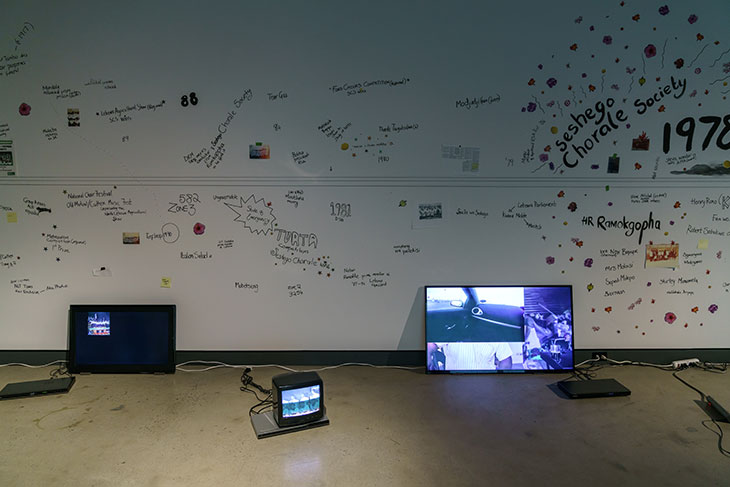
Sa koša ke lerole (Polokwane Choral Society Archive Project) (2016–ongoing), Dineo Seshee Bopape. Installation view at La Biennale de Montréal, 2016. Photo: Guy l’Heureux; courtesy the artist and Sfeir-Semler Gallery Beirut/Hamburg
Sa koša ke lerole was first shown in the 2016 edition of La Biennale de Montréal, but looked quite different in Grahamstown. The projectors had been changed, some more low-tech than before; the handwritten timeline was more disciplined. Reiteration and adaptation are in fact hallmarks of Bopape’s installations: an outcome of her method, which is to make site-specific environments that respond directly to their contexts. Notable examples include the mud-based piece Mabu, Mubu, Mmu (2017), shown in Kiev and Venice, and for which she received the 2017 Future Generation Art Prize, and the remarkable Untitled (of Occult Instability) [Feelings] (2016/18), first shown at the Palais de Tokyo in Paris.
For the Paris commission, Bopape produced an installation centred on a mound of building rubble with a video recording of Nina Simone performing her song Feelings at the Montreux Jazz Festival of 1976 playing nearby. The space was bathed in an intense orange light that echoed the colour of the backdrop to Simone’s performance. It also included Bopape’s handheld footage of the Bois de Boulogne parkland, where, starting in 1877, Africans were exhibited alongside animals in human zoos. Inspired by Bessie Head’s novel The Question of Power (1973), in which a woman descends into madness, Bopape’s installation was intended to explore the social, political and economic factors that can lead to psychic dissolution. In 2018, when it was part of Ngcobo’s Berlin Biennale, it also became a work about acts of hospitality and collaboration, after Bopape invited the Dutch-Caribbean artist Jabu Arnell, African-American performance artist Lachell Workman and Korean-American sculptor Robert Rhee to add to the updated installation.
![Untitled (of occult instability) [feelings] (2016), Dineo Seshee Bopape. Installation view at Berlin Biennale, 2018.](http://www.apollo-magazine.com/wp-content/uploads/2021/02/bb10-dineo-sheshee-bopape_06.jpg?resize=730%2C487)
Untitled (of occult instability) [feelings] (2016), Dineo Seshee Bopape. Installation view at Berlin Biennale, 2018. Photo: Timo Ohler; courtesy the artist and Sfeir-Semler Gallery Beirut/Hamburg
Art-historical precedents are helpful in assessing Bopape’s work, which shares affinities with that of figures such as Moshekwa Langa, Pascale Marthine Tayou and Senga Nengudi. But it is perhaps more instructive to consider the relationship between Bopape’s gallery-based installations and the informal architecture of the urban global south. Bopape once considered becoming an architect. In 2013, while preparing for a show in Paris, she told me about her admiration for the appropriated spaces used by members of the Nazareth Baptist Church. These areas in open field, next to rivers and below overpasses, are demarcated with painted white stones. ‘The holy space exists temporarily,’ Bopape said. ‘It is only there when the devotees are participating in it. I love that. The structure can also seemingly be changed and moved – it is a completely versatile and collapsible architecture.’
Storm Janse van Rensburg, formerly the director of the KZNSA Gallery in Durban and now a senior curator at Zeitz MOCAA in Cape Town, who worked with Bopape on her first solo project in 2005, offers some insight into her idiosyncratic, improvisatory method. ‘She created this intense maze of found objects, stuffed plastic bags en-masse, TV/video elements, and worked into all of it with paint,’ recalls Janse van Rensburg. ‘It was like stepping into a 3D painting, a total environment.’ He later included a video of her licking a screen, making marks with her tongue, in a touring survey of contemporary South African painting in 2006, as well as invited her to create a site-specific work for a 2013 group show in Berlin. ‘She has an incredible affinity with, and relationship to the objects and materials that she uses, in an almost compulsive and obsessive way,’ says Janse van Rensburg. ‘When in “working mode” she operates almost in a trance-like state.’
Over the years Bopape has gained a wealth of influential admirers, among them Marlene Dumas, who has said she was won over by both Bopape’s humour and her obliqueness. Now she is among the six artists shortlisted for the ninth edition of the Artes Mundi prize, which opens in digital form on 15 March (the physical version will open once Covid restrictions in Wales are lifted). Bopape’s installation, which takes as its subject the transportation of slaves from Senegal, will feature a sound piece drawing on traditional song, some 1,200 soil drawings, and a shrine with brick of Senegalese origin. This assemblage of materials calls to mind Gabi Ngcobo’s description of Bopape’s installations as acts of remembering, albeit marked by a particular artistic disposition towards the rubble of history: ‘Bopape likes to remember things in her own way.’
Unlimited access from just $16 every 3 months
Subscribe to get unlimited and exclusive access to the top art stories, interviews and exhibition reviews.

